Uemura Shōen: Her Life in Bijinga (Beautiful Woman Paintings)
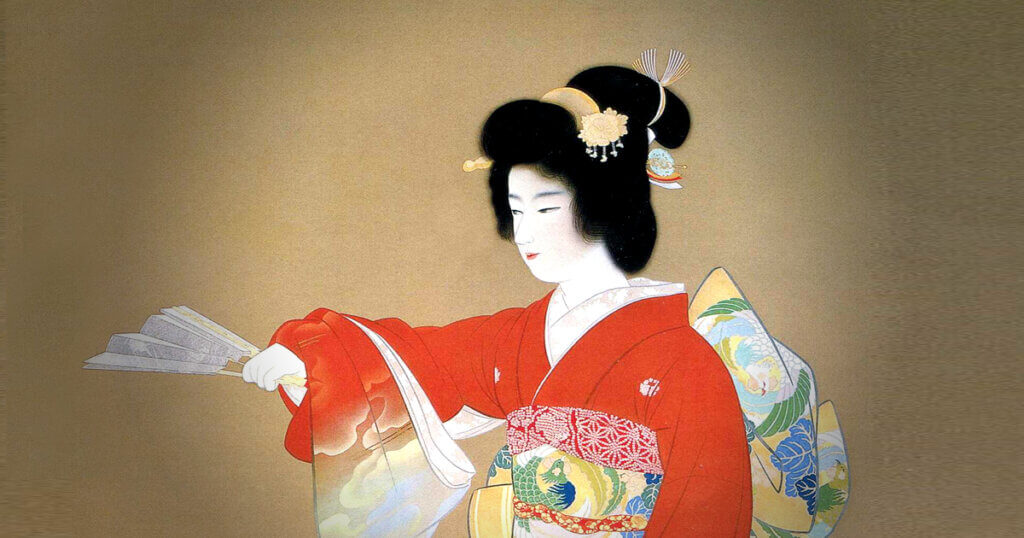
“Bijinga (beautiful woman paintings)” is a genre of Japanese painting based on the ukiyo-e style, which became popular among the general public in the Edo period.
Since then, a large number of master painters of bijinga have emerged and have captivated the hearts of many people.
Among them, the queen of bijinga is Uemura Shōen (1875-1949), one of the most famous female painters in Japan.
It has been said that “there was no painter like Shōen before and after her”.
However, the life of Uemura Shōen, who painted such beautiful and innocent paintings, was one of struggle.
Today, more and more women are working as painters, but in Uemura Shōen’s time, the art world was completely male-dominated.
While women were supposed to get married and take care of the house and children, Uemura Shōen was determined to make a living as a painter and continued to challenge the art world.
She was a painter with a passionate rock spirit, which is hard to imagine from her beautiful paintings.
In this article, we will introduce you to the rock ‘n’ roll artist Uemura Shōen.
Contents
- 1 1875: Born in Kyoto, as the Second Daughter of a Leaf Tea Shop.
- 2 1887: Entered the Kyoto Prefectural School of Painting; the 1st teacher: Suzuki Shōnen
- 3 1890: Debut
- 4 1893: The 2nd Master Kōno Bairei
- 5 1895: The 3rd Master: Takeuchi Seihō
- 6 1902: Birth of the first son, Uemura Shōkō
- 7 1904: “Prostitute Kiyū” Incident
1875: Born in Kyoto, as the Second Daughter of a Leaf Tea Shop.
Uemura Shōen’s father had passed away two months before Shōen’s birth, leaving her mother to raise her two daughters while running her own business. Her mother, Nakako, received the following advice from those around her.
“You can’t bring up your daughters on your own, so why don’t you marry again?”
“You can’t run a business and bring up children at the same time.”
But she ignored all such advice.
“I’m going to raise these kids on my own, while I’m still in business!” She shows her passionate rock spirit. (Nakako is awesome!)
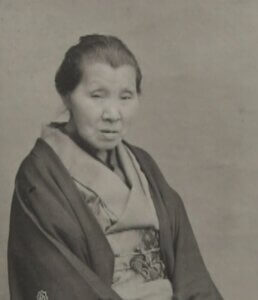
In fact, she raised her two daughters by herself, without whining or relying on relatives. The presence of this reliable mother, Nakako, had a great influence on Shōen’s future painting style.
1887: Entered the Kyoto Prefectural School of Painting; the 1st teacher: Suzuki Shōnen
After graduating from primary school, at the age of 12, she entered the Kyoto Prefectural Art School, the first public art school in Japan. (How quickly she decided to pursue a career in painting!)
At that time, there was a feeling that “a woman should not become a painter…”. Naturally, there was no understanding from the people around her and she faced a lot of opposition, but her mother, Nakako, was the only one who supported her, saying, “It’s the path you love.” (That’s really great! In that sense, her mother Nakako not only brought up Shōen, but also her art.)
Uemura Shōen’s first teacher at the Kyoto Prefectural School of Painting was Suzuki Shōnen.
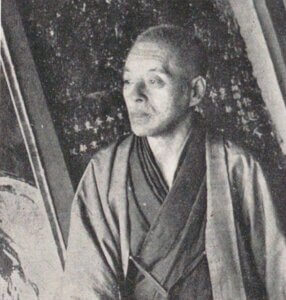
Suzuki Shōnen was the founder of the Suzuki School in Kyoto, which was very influential at the time. He was characterised by his vigorous brushwork and left many paintings of pine trees, sunrises, and Mt. Fuji.
He had a very rough temperament, but he was also very caring and popular with his students and pupils.
Shōen was also a woman with a strong will to be a painter, so it seems that she and Suzuki Shōnen were on the same page.
When Suzuki Shōnen resigned from his position as a teacher at the Kyoto Prefectural School of Painting in 1888, she also left the school and entered the Shōnen School. (You’re leaving school!? Nakako is going to cry ( ノД`))
Uemura Shōen’s painting name “松園 Shōen” was given to him by Suzuki Shōnen, who combined the character for “松 (shō, pine)” in his own name with “園 (en, farm)” which reminds him of a leaf tea shop.
1890: Debut
Uemura Shōen’s debut in the art world came early, when she exhibited “Four Seasonal Beauties” at the 3rd National Industrial Exhibition, a major event held in 1890.
For this, she was awarded the first prize, along with her future teacher, Takeuchi Seihō, and Yamamoto Shunkyo, a leading figure in the Kyoto art world.
His Royal Highness, Prince Connaught of England, who was visiting Japan, bought the work, so she made a spectacular debut at the age of 15. (It was said that the way the relatives changed their attitude quickly was amazing because the newspaper wrote “A girl genius appears!”)
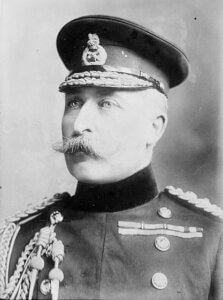
The motif of this “Four Seasonal Beauties” is thought to have been painted by Uemura Shōen in response to various requests, as there are several of the same style in existence.
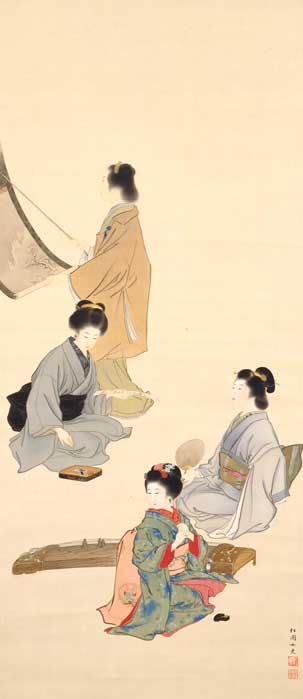
1893: The 2nd Master Kōno Bairei
Aiming to reach a higher level, Uemura Shōen received permission from Suzuki Shōnen to study under a new master. That person was Kōno Bairei.
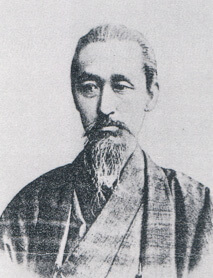
This Kōno Bairei was a painter who made a name for himself as a teacher. Once upon a time, when Kōno Bairei was still young, he had a fortune teller predict his future as a painter.
The result of the divination was as follows.
“You will end up as a second-rate painter, but your students will become first-rate painters, so you should focus on teaching them.
Kōno Bairei was sentenced to a thankful death sentence as a painter. (It’s too painful…)
However, as predicted, many first-rate artists, including Takeuchi Seihō, were born from the Kōno Bairei school.
Such is the case with Kōno Bairei, but it seems that he and Suzuki Shōnen were on bad terms, and their painting styles are also contrasting. If Suzuki Shōnen is described as a painter with a strong style, then Kōno Bairei is a painter with a soft style. (It’s like the relationship between Raoh and Toki in the manga Fist of the North Star.)
In the beginning, Uemura Shōen was puzzled. Even though she tried to learn Kōno Bairei’s style, she couldn’t get rid of Suzuki Shōnen’s style, which she had studied until then, so she ended up with a strange mixture of the two, and ended up producing only half-hearted paintings.
Uemura Shōen, who had fallen into a slump, arrived at the
“I’ll take the best parts of both masters and mix them with my own good points to create an original style!”
It was a very clever idea. (As expected of a rock ‘n’ roller, Shōen. She’s got a strong heart!)
Unfortunately, her second master, Kōno Bairei, passed away around the time she was coming out of her slump. It was a short relationship between master and disciple, only two years after Shōen joined the school.
1895: The 3rd Master: Takeuchi Seihō
After Kōno Bairei passed away, his students were divided into four groups: Kikuchi Hōbun, Taniguchi Kōkyō, Tsuji Kakō, and Takeuchi Seihō, all of whom were known as the “Big Four” under Kōno Bairei.
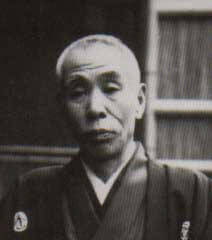
This Takeuchi Seihō was the greatest painter and leader to come out of the pupils of Kōno Bairei. He was known as the “East’s Taikan, West’s Seihō” along with Yokoyama Taikan.
Takeuchi Seihō’s two-part program for his disciples was to “study old paintings” and “explore realism. (In other words, he wanted them to do everything from Yamato-e to Western painting… It’s quite a spartan teaching, isn’t it, Seihō-sensei?)
In this way, Uemura Shōen absorbed the different styles of painting from each of her three masters, and her natural talent blossomed, winning her many awards at various exhibitions.
1902: Birth of the first son, Uemura Shōkō
Uemura Shōen was active in the art world from a young age, but in the male-dominated world of painting, many people were jealous of her talent, and the hardships she endured were unimaginable.
And then there was a scandal…
Shōen had given birth to her first son. This itself is something to be celebrated, but surprisingly the father is unknown and she became a mother without ever having married. (Seriously?)
It sounds like something the media would be happy to write about, but Shōen never talked about the father and continued to paint, ignoring the media. (That’s Ironheart! She rocks!)
Incidentally, her eldest son was the future Uemura Shōkō, who became a painter like his mother, and his child (Shōen’s grandson), Uemura Atsushi, also became a painter. (DNA is amazing.)
1904: “Prostitute Kiyū” Incident
Shōen was a woman of many topics, and she had many enemies and was harassed in various ways.
One of the most notable incidents was an incident involving a work (Prostitute Kiyū) that she exhibited at an exhibition in 1904.
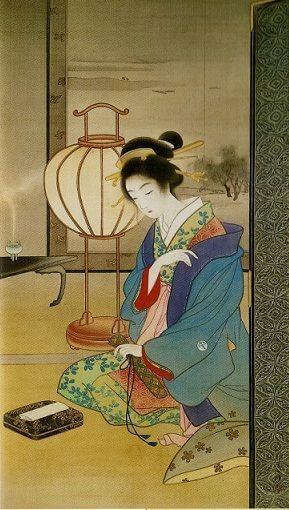
In the late Edo period (1603-1868), when Japan’s samurai were forced to bow down to foreigners after the opening of the country to the outside world, Kiyū, a prostitute in Yokohama, refused to take a foreign customer and committed suicide to show her Japanese spirit.
This work was based on this story. It is a work that expresses the strength of Kiyū as a woman, who stands by her own will and is unaffected by the opportunistic attitude of men.
This work by Shōen, which depicts a dignified figure of a proud woman facing adversity, was graffitied by someone while it was on display, without the security guards noticing.
And the person from the bureau came to Shōen and said…
“Come back in the morning and fix it because it’s a disgrace to leave it like that.”
There was no apology.
The rocky Shōen was furious.
“I’m sure the culprit was jealous of me, but it’s not fair to scribble on my work. If he had a problem with me, he could have just inked my face. I’m not going to fix it and cry myself to sleep as if nothing happened. Let’s just leave it as it is and let them see what happens.”
She took a hard-line stance. (As expected of Rock Shōen.)
The person from the bureau was in a panic and apologized for the lack of management, so Shōen calmed down, but in the end, the graffiti was still on display. (The culprit was never identified.)
This work depicted a proud rock ‘n’ roll woman Kiyū, so I guess Shōen did not want to bend her mind.
Shōen later described this time in his life as follows.
“I don’t know how many times I’ve had to grit my teeth in tears and say, ‘I’ll make you pay for it.'”
Shōen seems to have gone through quite a few pandemonium.
By the way, this work was wanted by a picky person after the exhibition, and the dirt was wiped clean. (I’m glad to hear that.)







